
Beer is a relatively small lunar impact crater located on the Mare Imbrium, to the east of the crater Timocharis. It was named after German astronomer Wilhelm W. Beer. Just to the northwest is the matching twin Feuillée.

Carlini is a small lunar impact crater located in the Mare Imbrium. It was named after Italian astronomer Francesco Carlini. The crater is bowl-shaped with a small central floor. It has a higher albedo than the surrounding mare, making it prominent due to its isolated location. To the south is a wrinkle ridge named Dorsum Zirkel, and farther south lies the peak Mons La Hire.
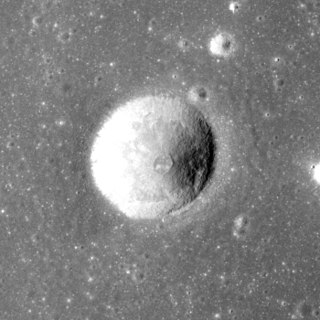
Borel is a tiny lunar impact crater located in the southeast part of Mare Serenitatis. It was named after French mathematician Émile Borel. To the northeast is the crater Le Monnier and to the southeast is the crater Abetti. Borel was previously identified as Le Monnier C.
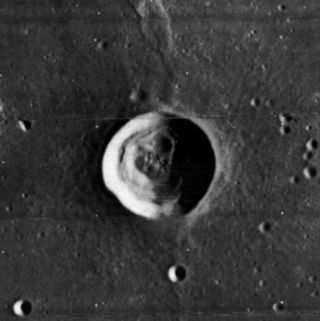
C. Herschel is a small lunar impact crater that lies on the western part of Mare Imbrium. It is named after German astronomer Caroline Herschel. It is a circular, bowl-shaped formation that has not undergone significant erosion. The interior floor has the same low albedo as the surrounding lunar mare. To the south-southwest is the similar crater Heis. C. Herschel lies on a wrinkle ridge of the lunar mare named the Dorsum Heim.

Clerke is a tiny lunar impact crater named after Irish astronomer Agnes Mary Clerke, who played a role in bringing astronomy and astrophysics to the public in Victorian England. It is located near the eastern edge of Mare Serenitatis in the midst of a rille system named the Rimae Littrow after the crater Littrow to the east. It is roughly circular and cup-shaped, with a relatively high albedo. In a valley to the southeast is the landing site of the Apollo 17 mission. Clerke was previously designated Littrow B.

Chladni is a small lunar impact crater that lies near the northwest edge of Sinus Medii, in the central part of the Moon. The crater is named for German physicist and musician Ernst Chladni who, in 1794, wrote the first book on meteorites. The rim of the crater is roughly circular, and there is a small central floor at the midpoint of the sloping inner walls. This feature has a higher albedo than the surrounding terrain. It is connected by a low ridge to the rim of the crater Murchison, which lies to the northwest. Due east of Chladni is the larger Triesnecker.

Abel is an ancient lunar impact crater that lies near the southeast limb of the Moon's near side. It is located to the south of the crater Barnard, at the northwest edge of the Mare Australe.

Artamonov is a lunar impact crater on the far side of the Moon. Its eroded outer rim does not have the circular shape of most lunar craters, but the overall shape of three or four merged craters. The largest is in the south, with smaller circular bulges to the north and east.

Bellot is a small lunar impact crater that is located on the southwest edge of Mare Fecunditatis. It lies between the craters Goclenius to the northwest and Crozier to the southeast. To the southwest is Colombo, and to the west is Magelhaens.

Chamberlin is a lunar impact crater that is located on the far side of the Moon, just past the southeastern limb. It lies to the southeast of the crater Jeans, and Moulton is attached to the southeastern rim of Chamberlin. This crater is located in a part of the lunar surface that has undergone resurfacing of crater interiors, producing dark-hued crater floors.

Fechner is a lunar impact crater that lies on the far side of the Moon's southern hemisphere, attached to the western rim of the large walled plain Planck. The eastern rim of Fechner intersects the Vallis Planck, a long, wide cleft in the surface that follows a course to the north-northwest. This valley intrudes into the southeastern rim of the crater, then continues northwards from the periphery of the northeast rim.

Becquerel is a lunar impact crater that lies in the northern hemisphere on the far side of the Moon. This is an ancient and heavily worn formation that is now little more than an irregular buri in the surface. The outer rim has been worn and reshaped until it forms a rugged, mountainous region around the flatter interior.
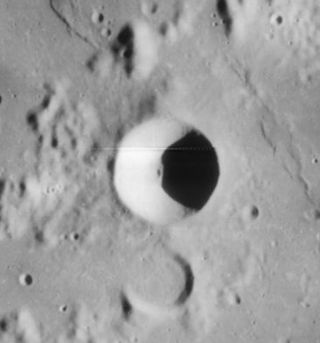
Darney is a small lunar impact crater that is located on the region of the Moon where the Mare Nubium joins the Oceanus Procellarum. It was named after French astronomer Maurice Darney. To the south is the lava-flooded crater Lubiniezky. The southern rim of Darney is attached to a series of low ridges that extend to the southwest.

Condorcet is a lunar impact crater that is located in the eastern part of the Moon's near side, to the southeast of the Mare Crisium. It was named after French mathematician Marquis de Condorcet. To the northeast of Condorcet are the craters Hansen and Alhazen.

Dunthorne is a small lunar impact crater that is located to the northwest of the small lunar mare called Palus Epidemiarum, in the southwest part of the Moon's near side. It was named after British astronomer Richard Dunthorne. It lies to the southwest of the crater Campanus, east of Vitello. Due south is Ramsden.
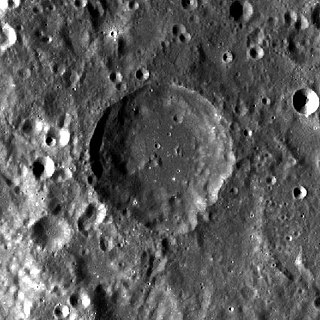
Dewar is a lunar impact crater that lies on the Moon's far side. Less than one crater diameter to the south-southwest is the crater Stratton. Vening Meinesz is a little over one crater diameter to the northwest. The slightly worn rim of this crater is roughly circular, with a small outward protrusion along the southern edge. The interior floor is marked by several small impacts along the eastern side.
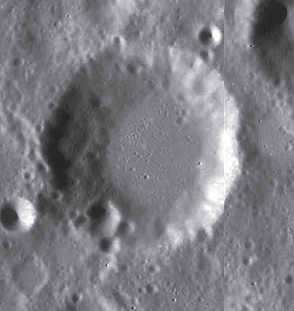
Dufay is a lunar impact crater that is located on the far side of the Moon. It lies about one crater diameter to the east of the large walled plain Mandel'shtam. To the northwest is the crater Papaleksi and to the east is Valier.
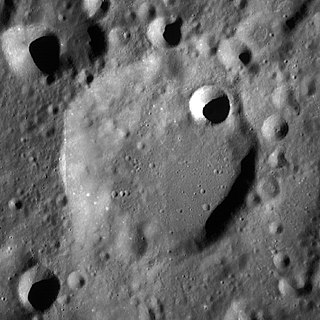
Evdokimov is a lunar impact crater on the far side of the Moon. It lies to the east of the crater Evershed, and west-southwest of Gadomski. This is a worn and eroded feature with a somewhat indistinct outer rim that is little more than a slight ridge in the surface. The rim is better formed along the western and eastern sides. A small crater with a relatively high albedo lies along the inner wall to the northeast, and is surrounded by a small, bright skirt of ejecta. The interior floor is nearly featureless, with only a few indistinct small crater rims marking the surface.

Firsov is a lunar impact crater on the far side of the Moon. It is located to due south of the crater Lobachevskiy, and to the northwest of Abul Wáfa. The circular rim of this crater has a small outward bulge along the southern edge, and smaller bulges along the western side. The inner walls have slumped to form talus piles along the base. The low-albedo interior floor is nearly level and featureless.
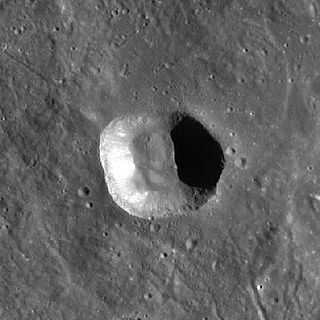
Fryxell is a small lunar impact crater that lies amidst the western inner ring of the Montes Rook. It is named for Roald H. Fryxell, an American geologist. It was previously designated Golitsyn B, a satellite of Golitsyn, before being assigned a name by the IAU. This crater is located on the Moon's far side, at the extreme edge of the region of the surface sometimes brought into view of the Earth due to libration. Even under rare conditions of favorable lighting and libration, this area would only be seen from the side amidst a rugged range of mountains. Thus this crater is best observed from orbit.























